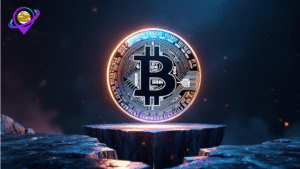This week in Washington, something felt a little different. Cardano founder Charles Hoskinson was there for a high-level roundtable on the CLARITY Act, and he came away sounding genuinely optimistic. For once, it seems like lawmakers and crypto people were actually in the same room, listening to each other.
Hoskinson pointed out that these discussions went further than they have in previous years. He called the meeting productive. Cooperative, even. That’s not a word you often hear when politics and crypto mix.
A Shift in Tone for Crypto Regulation
He made a point to credit others in the room. Ripple was there, which is significant given their long-running legal battle with the SEC. Venture capital firm Andreessen Horowitz (a16z) was also actively involved. Their presence matters—a16z has a massive financial stake in how all this plays out.
The CLARITY Act itself is trying to do a big thing: clarify how digital assets are classified. It aims to set clear rules for exchanges and token issuers. It’s an attempt to move past the confusing, case-by-case enforcement we’ve seen and toward an actual, predictable structure.
Why Industry Presence Matters
For a long time, crypto projects felt like they were shouting from the outside. This roundtable suggests someone might finally be listening. Having people like Hoskinson at the table means regulators are hearing from the builders, not just the lawyers.
That direct line is crucial. The industry’s biggest complaint has always been that rules are made by people who don’t fully grasp the technology. This was a chance to explain the real-world impact of regulatory language—how it affects everything from liquidity to user safety.
And it wasn’t just a quick photo op. The meeting went on for over an hour, diving into the specifics of market structure drafts. They talked token categorization, compliance duties for exchanges, disclosure requirements. The boring, essential stuff.
More Than Just Building Technology
Hoskinson’s update wasn’t just for policymakers. It was for Cardano supporters, too. It signals that the project is engaged on both fronts: building the technology and helping shape the environment it will exist in. That dual approach might become more necessary than ever.
The broad attendance says a lot. Reports noted people from Coinbase, Kraken, Circle, and several big investment firms were all in the room. When that many competing interests gather around one piece of legislation, it usually means they see the stakes as too high to ignore.
Perhaps that’s the real takeaway. After years of uncertainty, there might be a growing willingness to find a middle ground. It’s too early to call it a breakthrough, but it feels like a step. A genuine one.






